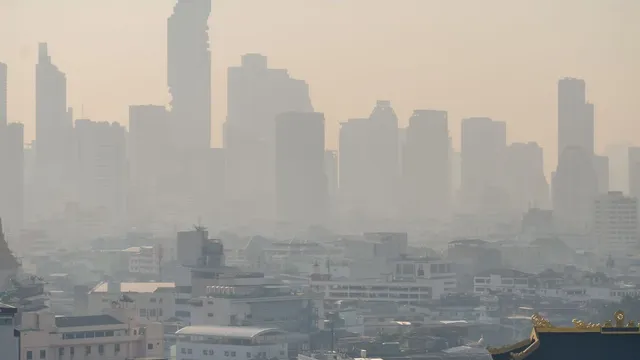- By Iram Hussain
- Mon, 18 Nov 2024 10:45 AM (IST)
- Source:JND
Delhi's air pollution has reached catastrophic levels with the Air Quality Index (AQI) plummeting to severe categories. The national capital's toxic air poses severe health risks, exacerbating respiratory diseases, cardiovascular issues and neurological disorders. Emergency measures have been announced to mitigate the crisis. The alarming situation underscores air pollution's devastating impact, making it India's top environmental concern. Urgent collective action is necessary to combat this silent killer, crucial to rescue the city from this poisonous chokehold. Here are five potential diseases that can be caused by the worst air quality.
Diseases Caused By Worst Air Quality
Asthma
Asthma is a debilitating disease exacerbated by air pollution. Toxic air pollutants trigger severe attacks while worsening symptoms and reducing lung function. Asthmatic patients face heightened risks and pollution's impact threatens their quality of life, making breathing a constant struggle.
Heart Disease
Air pollution significantly increases the risk of heart disease, including strokes, cardiac arrests and arrhythmias. Toxic particles damage blood vessels, elevate blood pressure and trigger inflammation, worsening cardiovascular health. Exposure to poor air quality poses a substantial threat, especially to vulnerable populations.
-1731906549491.jpg)
Air pollution poses several health risks due to its harmful emission (Image Credits: Canva)
Bronchitis
Poor air quality exacerbates bronchitis, inflaming airways and triggering chronic coughing, wheezing and breathing difficulties. Prolonged exposure to toxic pollutants irritates bronchial tubes and increases mucus production and infection risk. Vulnerable populations, especially children and seniors face heightened risks due to this harmful emission.
Skin Disease
Air pollution's toxic particles penetrate the skin, triggering inflammatory responses and oxidative stress. This exacerbates conditions like eczema, acne and premature ageing. Exposure to pollutants also increases skin cancer risk due to DNA damage. Protective measures such as antioxidants and sunscreens offer partial relief.
Kidney Disease
Toxic particles present in the air infiltrate the bloodstream, damage kidneys and increase disease risk. Long-term exposure exacerbates kidney dysfunction, reduces filtration capacity and accelerates renal failure. Vulnerable populations, especially those with pre-existing conditions face heightened risks.
ALSO READ: Air Pollution: 5 Simple Ways To Improve Indoor Air Quality And Protect Lungs
(Disclaimer: This article is for informational purposes only. It is not a substitute for professional advice, diagnosis or treatment.)

